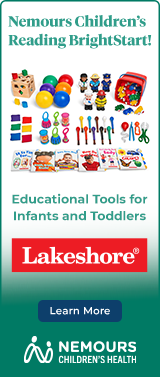Play this sorting game using your child’s favorite letter -- the first letter in his name! Chances are, your child is familiar with the first letter of his name and may even have claimed it as “his letter!” Use his natural interest in “his letter” to learn about differences and similarities in letters.
- magnetic uppercase letters
- refrigerator or cookie sheet
- masking or painters tape
- index card
- marker
Step 1: In this activity, your child will sort magnetic alphabet letters into two groups:
- Letters that are made with sticks
- Letters that include humps, bumps, curves and circles
Gather six uppercase magnetic alphabet letters. Be sure to include the first letter of your child’s name. Include three letters that are made of sticks (i.e., A, E, F, H, I, K, L, M, N) and three letters that include humps, bumps, curves or circles (i.e., B, C, D, G, O, P, Q).
Step 2: On a cookie sheet or refrigerator, make two sections with strips of tape.
Step 3: Write the first letter of your child’s name on an index card and place it at the top of the left section. You might say:
Whose letter is this? Yes, it’s your letter. It says T. T for Thomas.
Step 4: Describe your child’s letter, talking about what you see. For example, does it have all sticks, straight sticks, slanted sticks, sticks and curves, humps, bumps or circles? You might say:
The Letter T has one stick that goes down and one stick across the top. It has straight sticks.
Step 4: Ask your child to find other letters that are made with sticks (i.e., A, E, F, H, I, K, L, M, N). You might say:
Let’s find some other letters that are made with sticks. We’ll put letters that have all sticks, like your letter, on this side of the refrigerator.
Step 5: Find a letter that has humps, bumps or circles (i.e., B, C, D, G, O, P, Q) and place it on the other side of the line. You might say:
This is the Letter R. Look, it has a straight stick, but it also has 1 bump, so we will put it on the other side of the line.
Can you find another letter that has a hump, bump, or circle? You found the O. Great! Let’s put it here.
Step 6: Continue until all the letters have been sorted or he is no longer interested.
See Eating the Alphabet by Lola Ehlert to connect letters to the kitchen.
Create a selection of letters that are very similar to “his letter” and very different so that he can see the differences more clearly. Limit the amount of letters he has to choose from. For example, if your child’s first name starts with T, you might include just these four letters to choose from: T, E, O, S.
Ask your child to name the letters. You might even ask if he knows the letter sounds.








